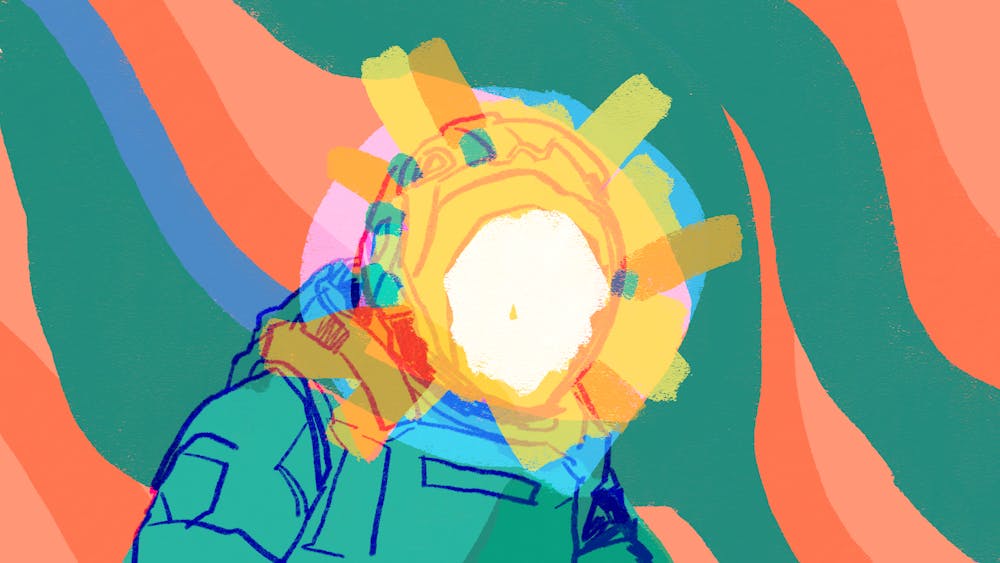The human experience exists in color and motion. Visuals and emotions often capture events better than words, no matter how complex or provocative the event may be. When we see stories adapted on screen, we’re bound to gravitate towards lingering camera work, color contrasts that match the mood, and graphics that force us to look and listen. So it makes sense when Love Death + Robots describes itself as mind–bending. Its use of animation generates unseen adventure, both familiar and unfamiliar, and bends the rules for how humans see themselves in fiction.
For the uninitiated, Love Death + Robots is an animated anthology series on Netflix. Each short is around four to 17 minutes long, with their commonality being some connection to fantastical, otherworldly, or futuristic elements. The genres, and hence the animation styles of these episodes, however, vary widely—from dark comedy to science fiction to full–blown horror. It’s this emphasis on experimentation in storytelling that allows Love Death + Robots to accomplish something unique—it accomplishes something that's fully human.
Like most anthologies, it does have its misses (I’m looking at you, Black Mirror), but it’s still impossible to ignore the creative vision infused into even the more confusing segments. The third volume, released just over a month ago with a nine–episode total, regains the fierce quality of its predecessors and consequently honors animation as earnestly as ever. “The Very Pulse of the Machine” and “Night of the Mini Dead” are standouts, with animation most directly linked to the plot and themes they want to convey.
“The Very Pulse of the Machine” carries emotional and cinematic weight behind it. We follow astronaut Martha Kivelson after an expedition on Io, Jupiter’s sulfurous moon, reaches a disastrous end. She has a limited amount of time to get to safety, as her only source of oxygen is her deceased co–pilot’s tank. The entire episode feels like an intense acid trip, particularly due to director Emily Dean heavily leaning into the medium of animation. Io, also known as the “machine,” is the most volcanically active world in the solar system. Its motion is shown perfectly as Kivelson drags her former co–pilot across the terrain, taking in more and more morphine from her suit to survive through sheer force of will. Her version of reality is put into question as she dissociates more and more, but through the pulsating landscape and the changing colors, we see not a psychologically stressed human, but the beauty of life and death.
Right after “The Very Pulse of the Machine” comes “Night of the Mini Dead.” The tonal and artistic whiplash here is strong, shifting from a two–dimensional comic book style to miniature stop–motion animation. “Night of the Mini Dead” is a zombie apocalypse story, except this time the dead are brought to life from cemetery sex gone wrong. It’s a dark comedy through and through, with humor, irreverence, and a dash of social commentary. It brings something new to the table of overdone apocalypse stories—the short's attention to detail is strong amidst the progressively louder background orchestra, as political easter eggs are scattered throughout the tiny trucks and buildings.
“Night of the Mini Dead'' comes together at the ending. The United States and Russia nuke each other and effectively blow up the Earth, yet this destruction is framed as an extremely small blip in the much larger Milky Way Galaxy. Viewing the short as a straightforward, fast–paced comedic journey doesn’t do justice to its well–crafted metaphor. Everything is presented as miniature because that’s what humanity is in the grand scheme of things. Miniature.
And that’s what animation aims to do, at the end of the day: bring some outside perspective into our seemingly cut and dry lives. Love Death + Robots tells stories that seem unrealistic at face–value, but the directors’ creativity and the focus of their respective visions tell us the most realistic things about ourselves, humanity, and all similar live–action efforts.
So support those animators. Turn the lights off, grab a bowl of ice cream, and watch Love Death + Robots to experience different worlds that may not be so different from our own.







